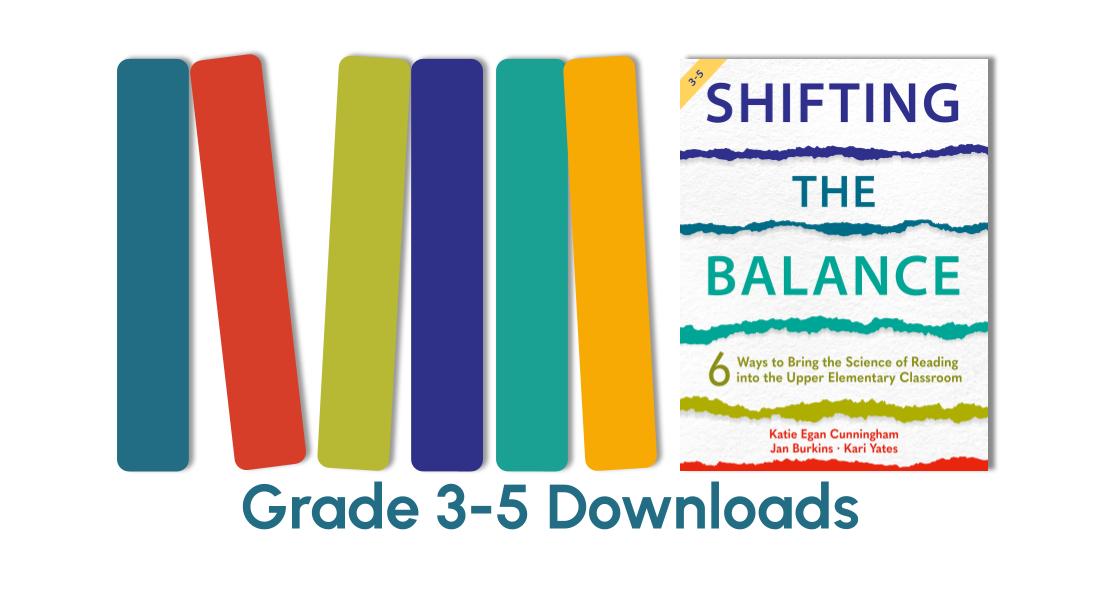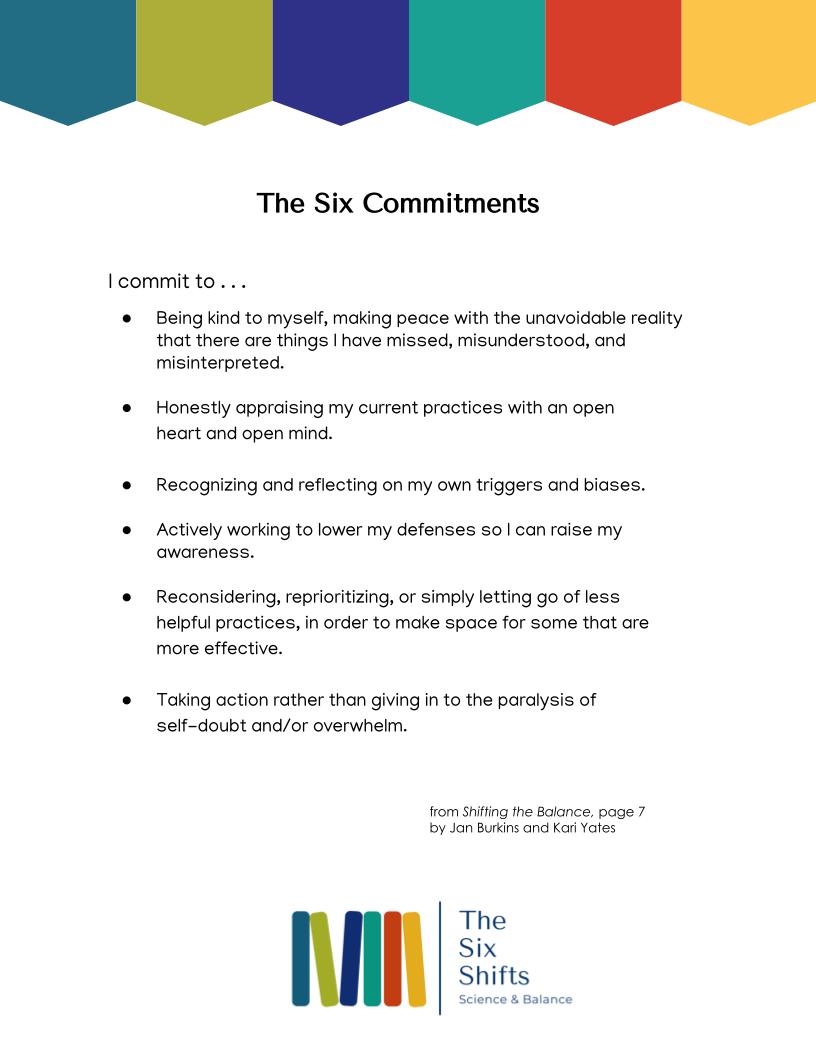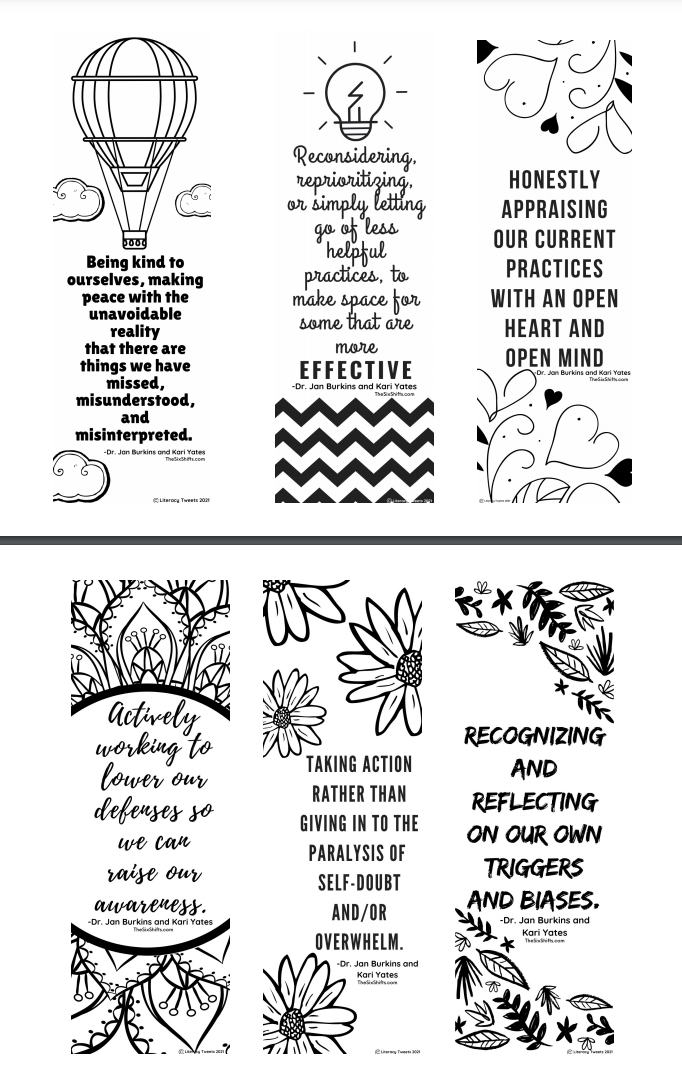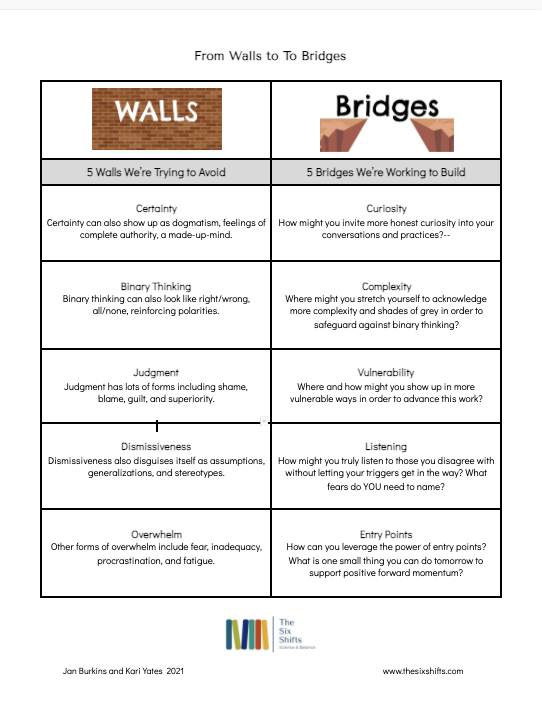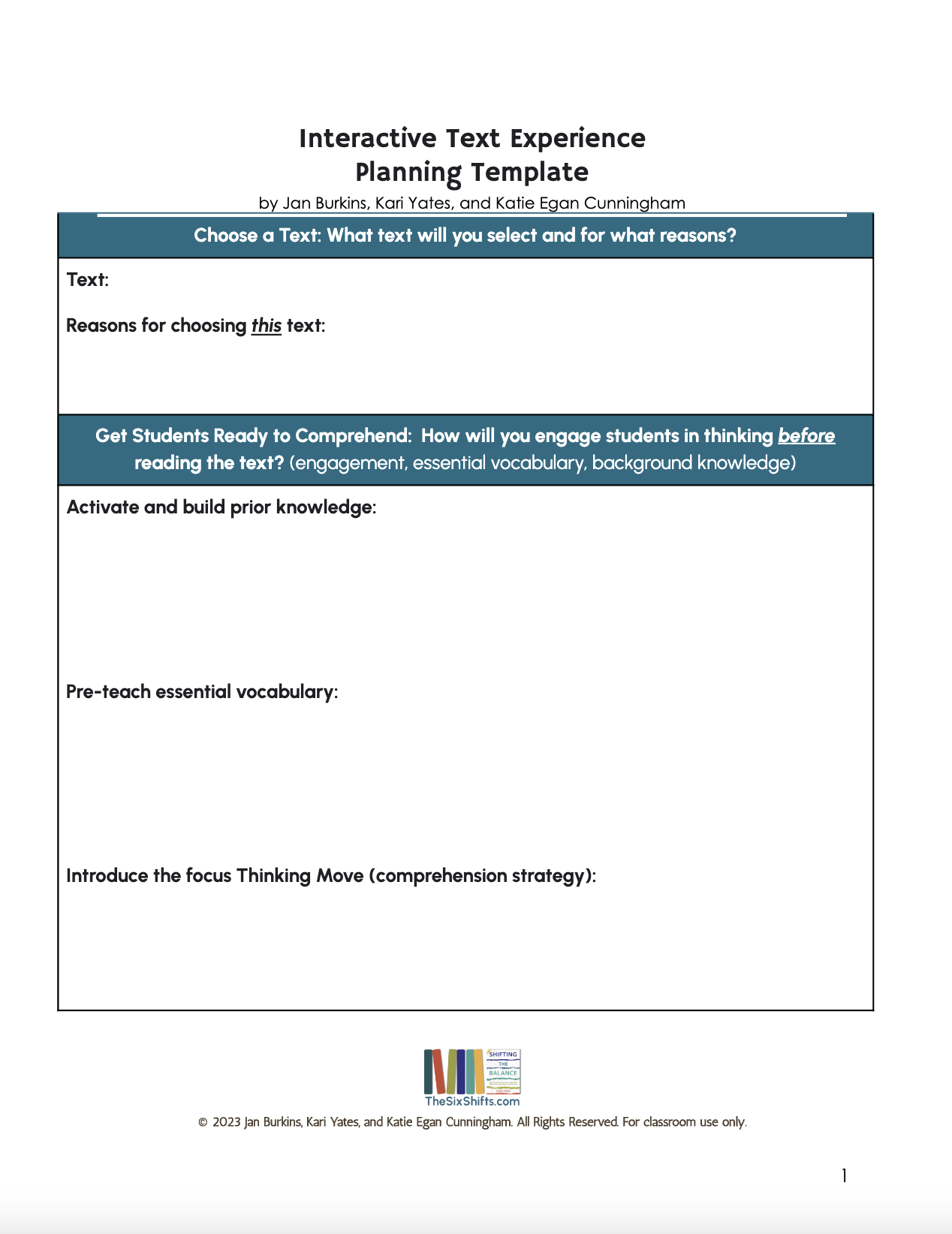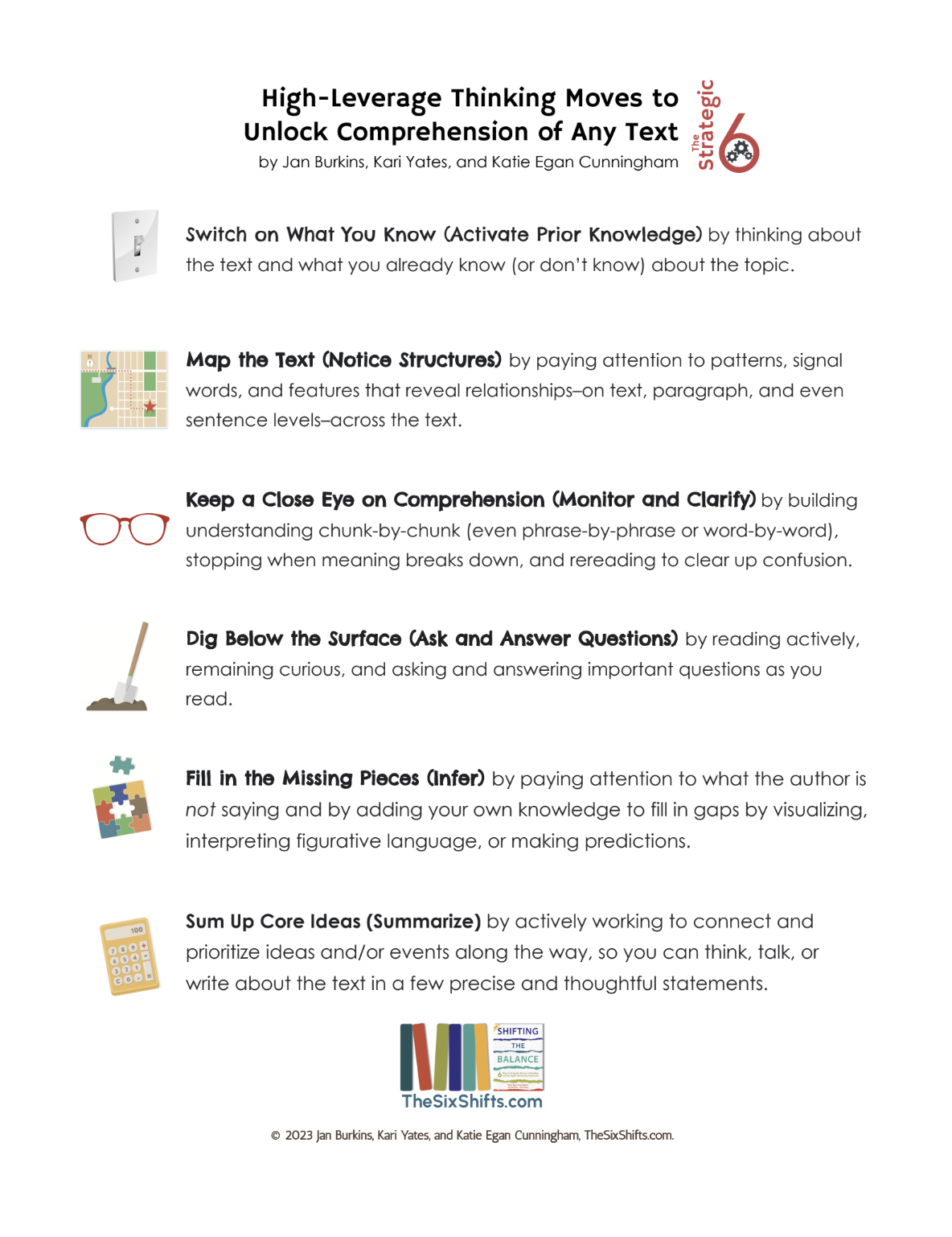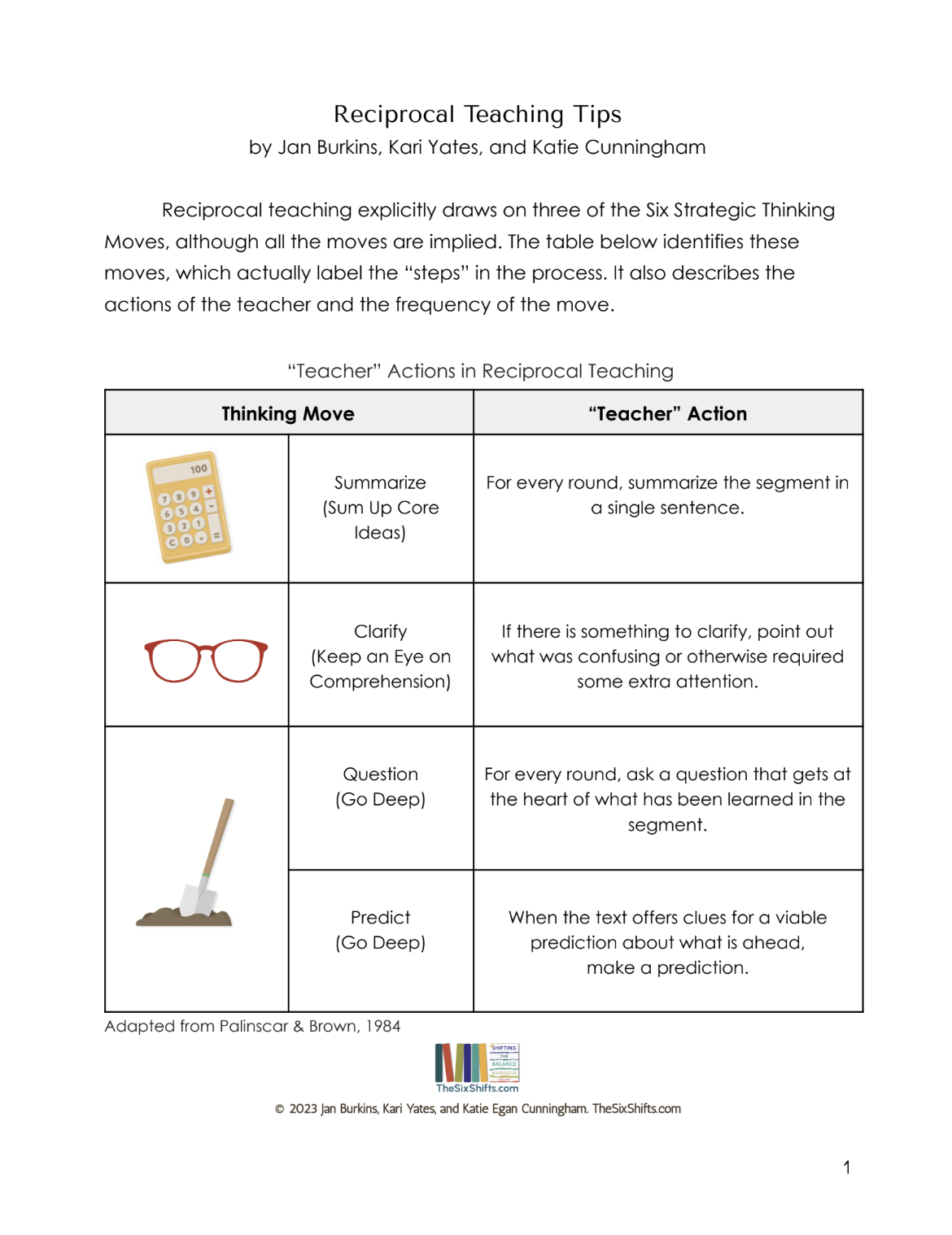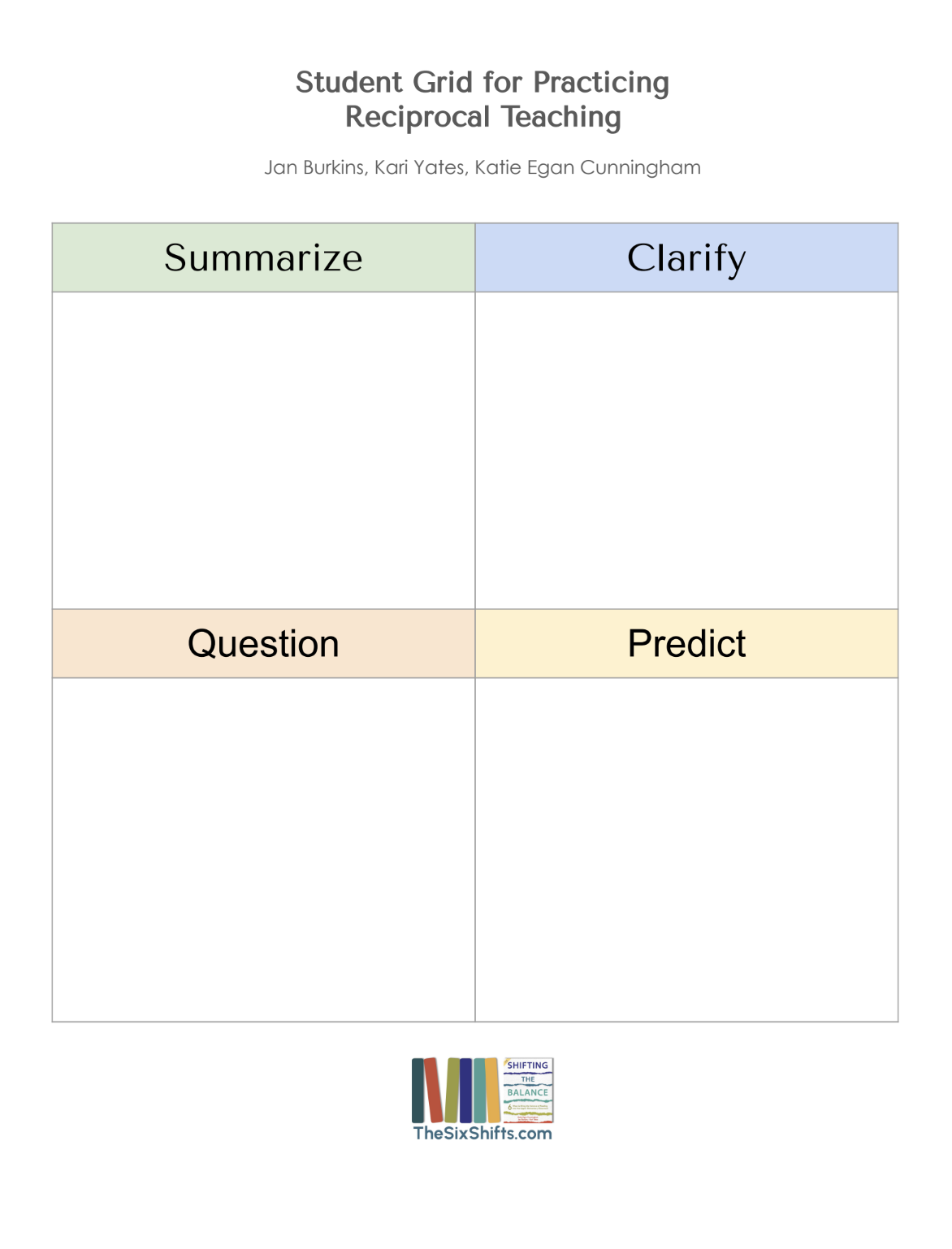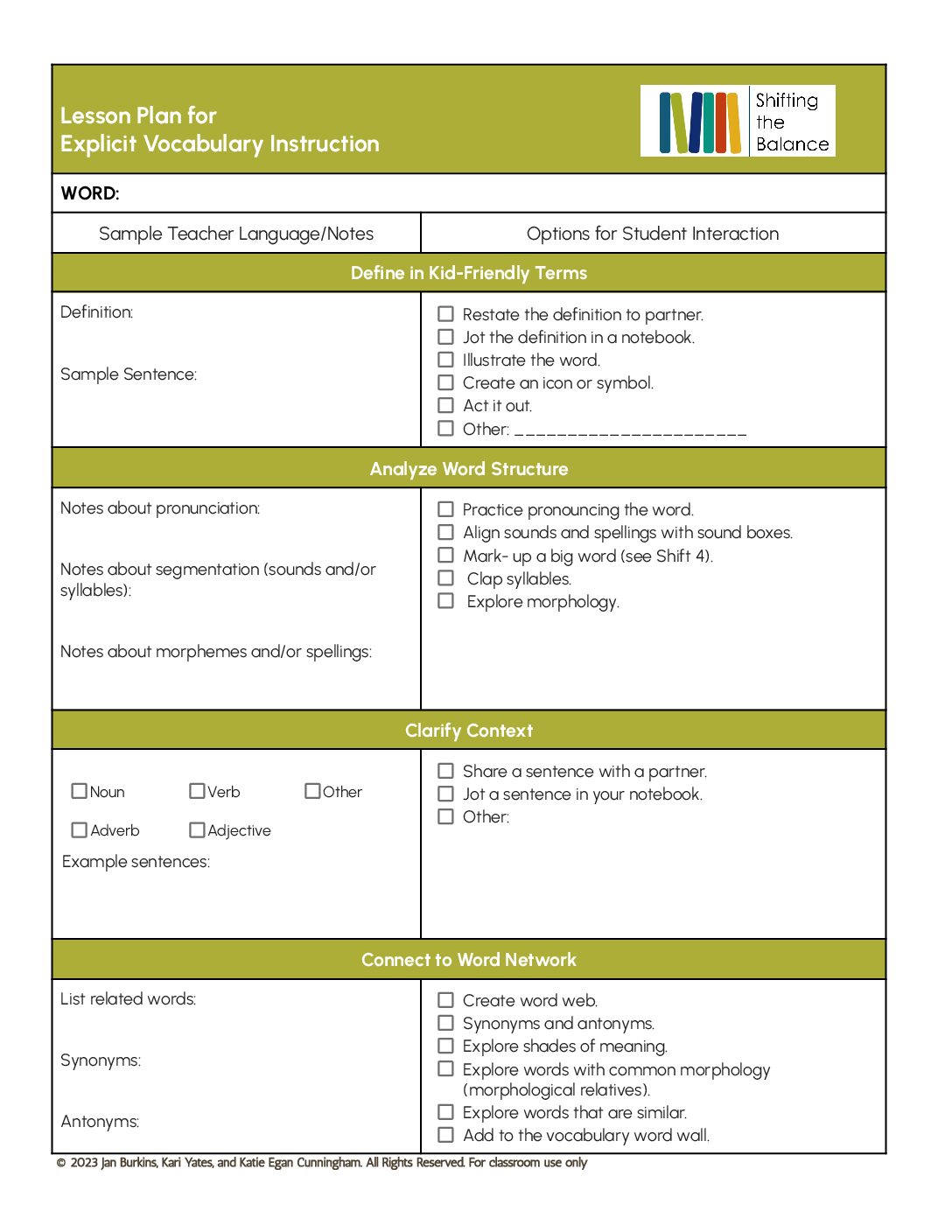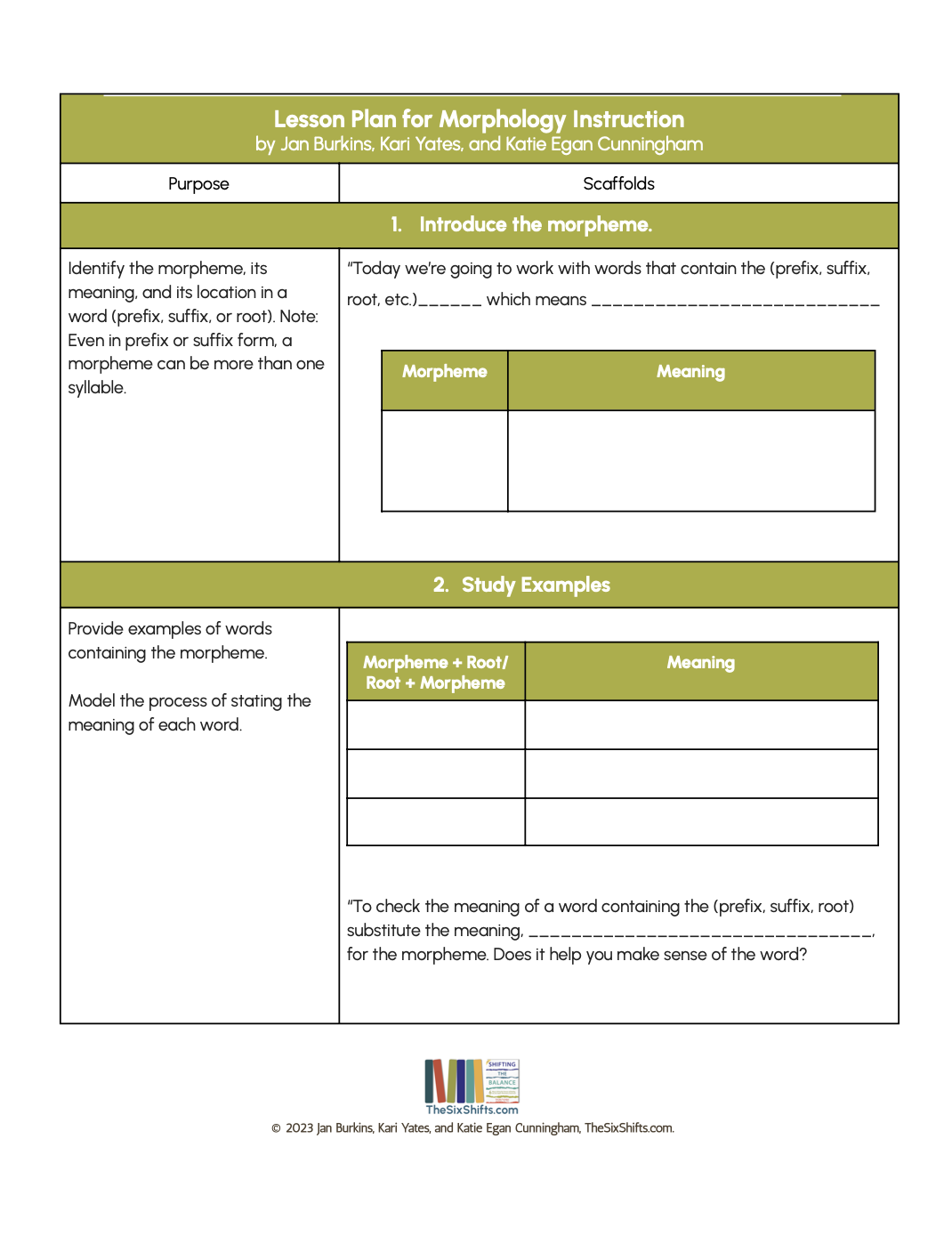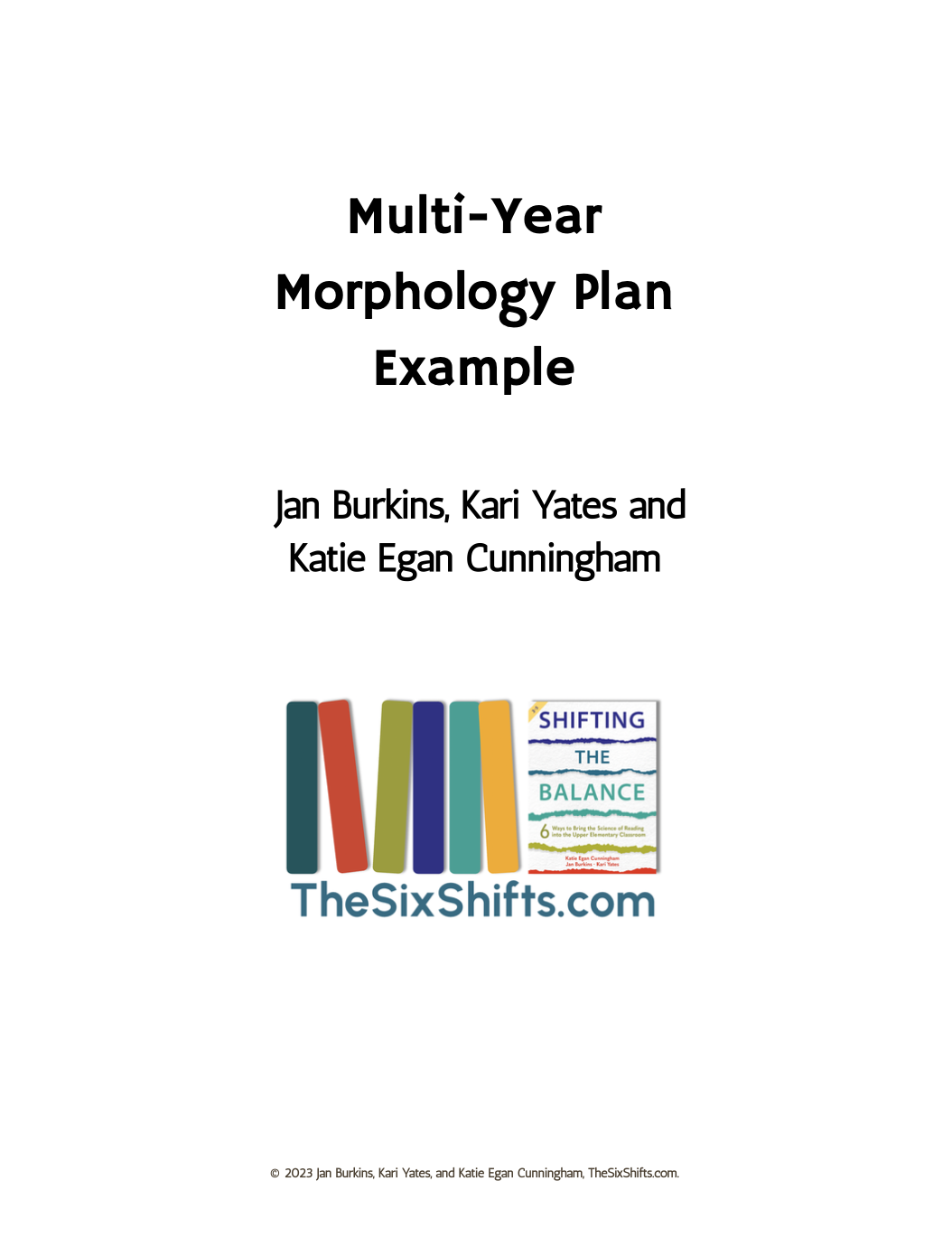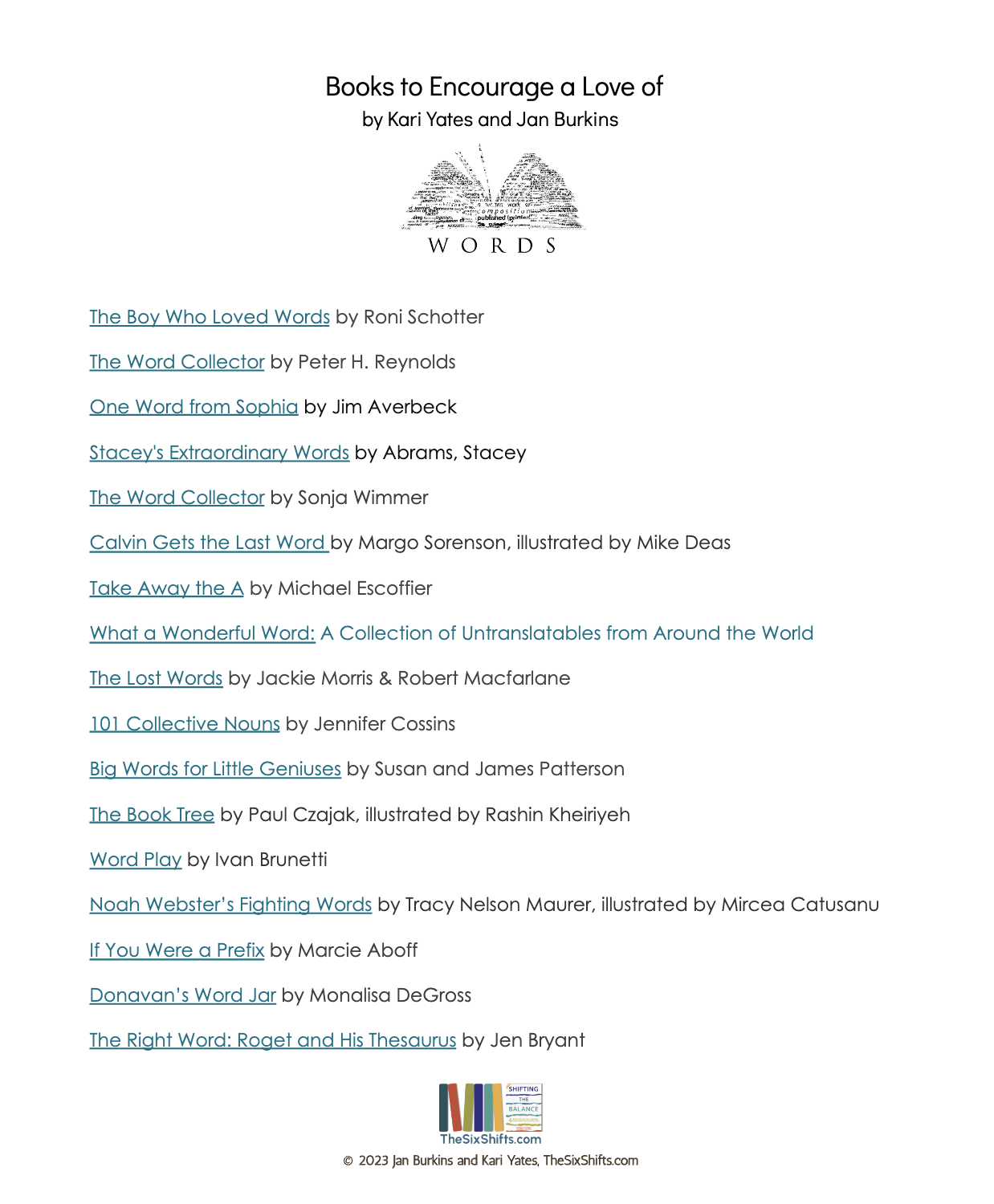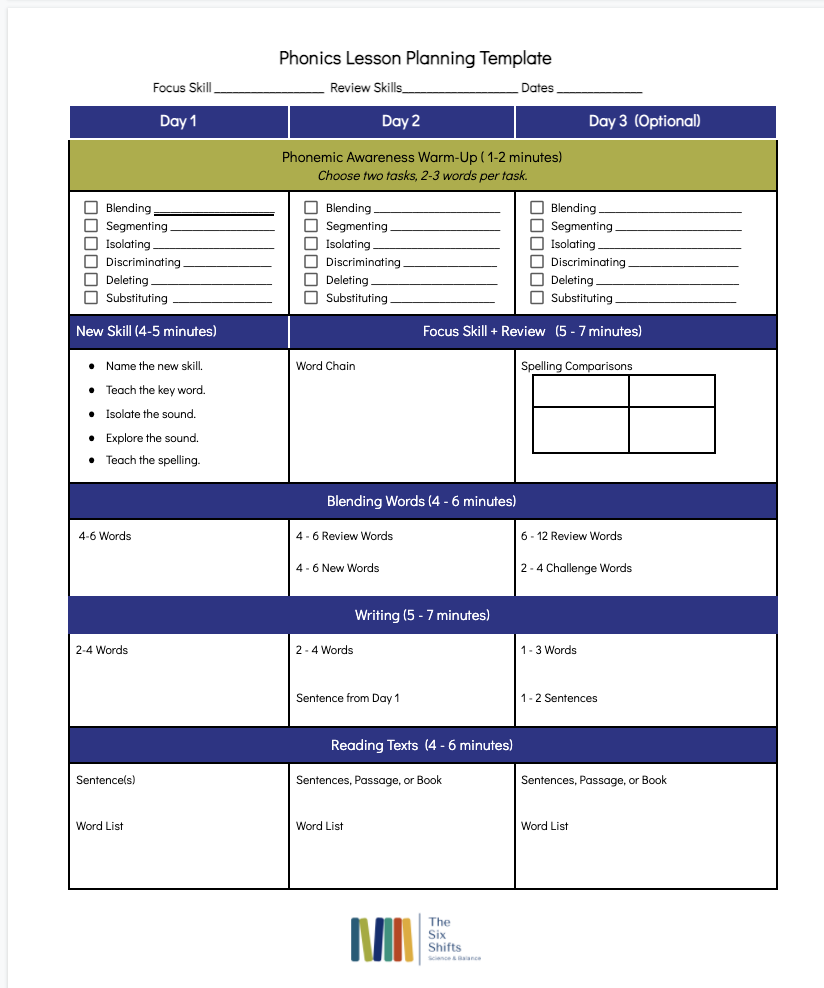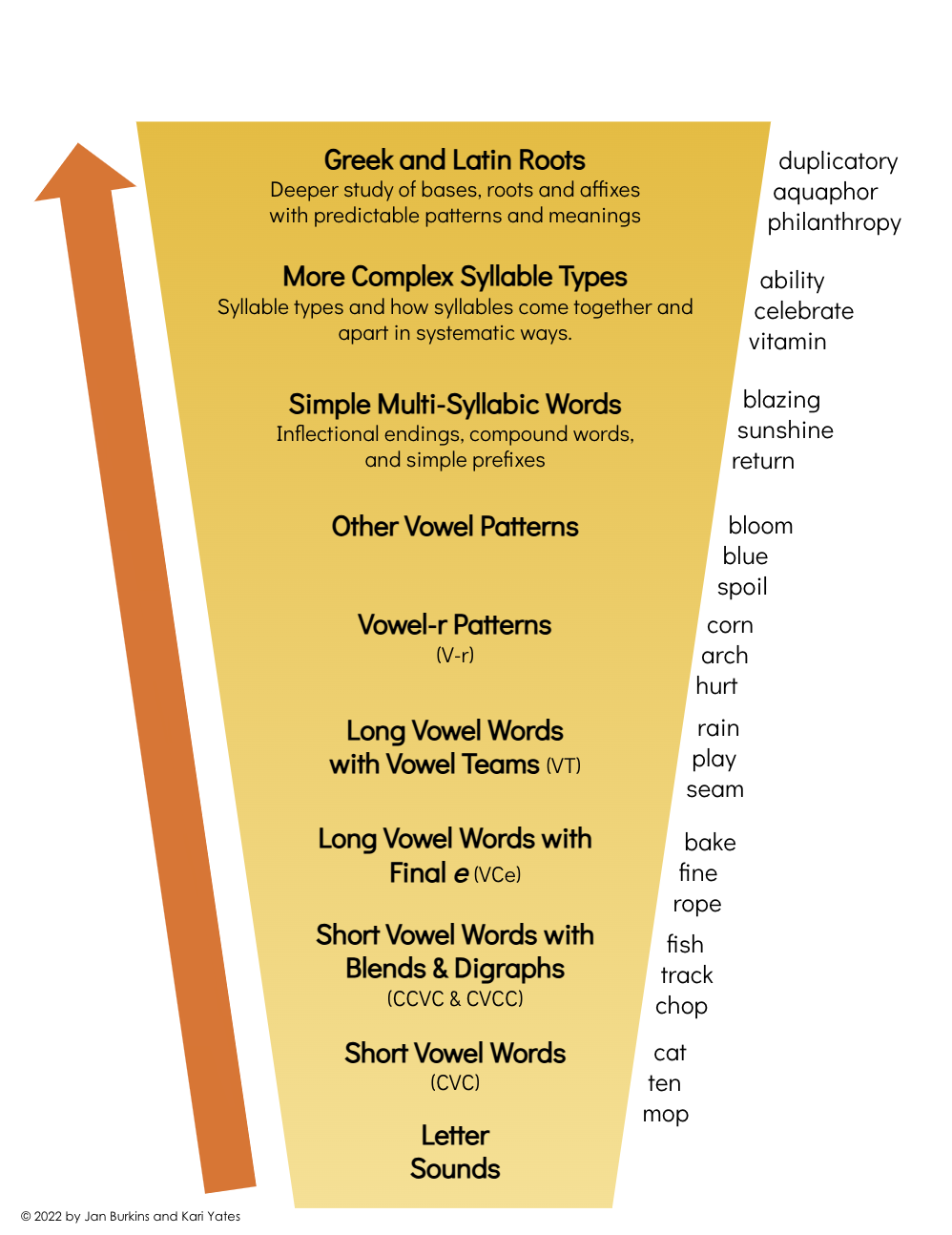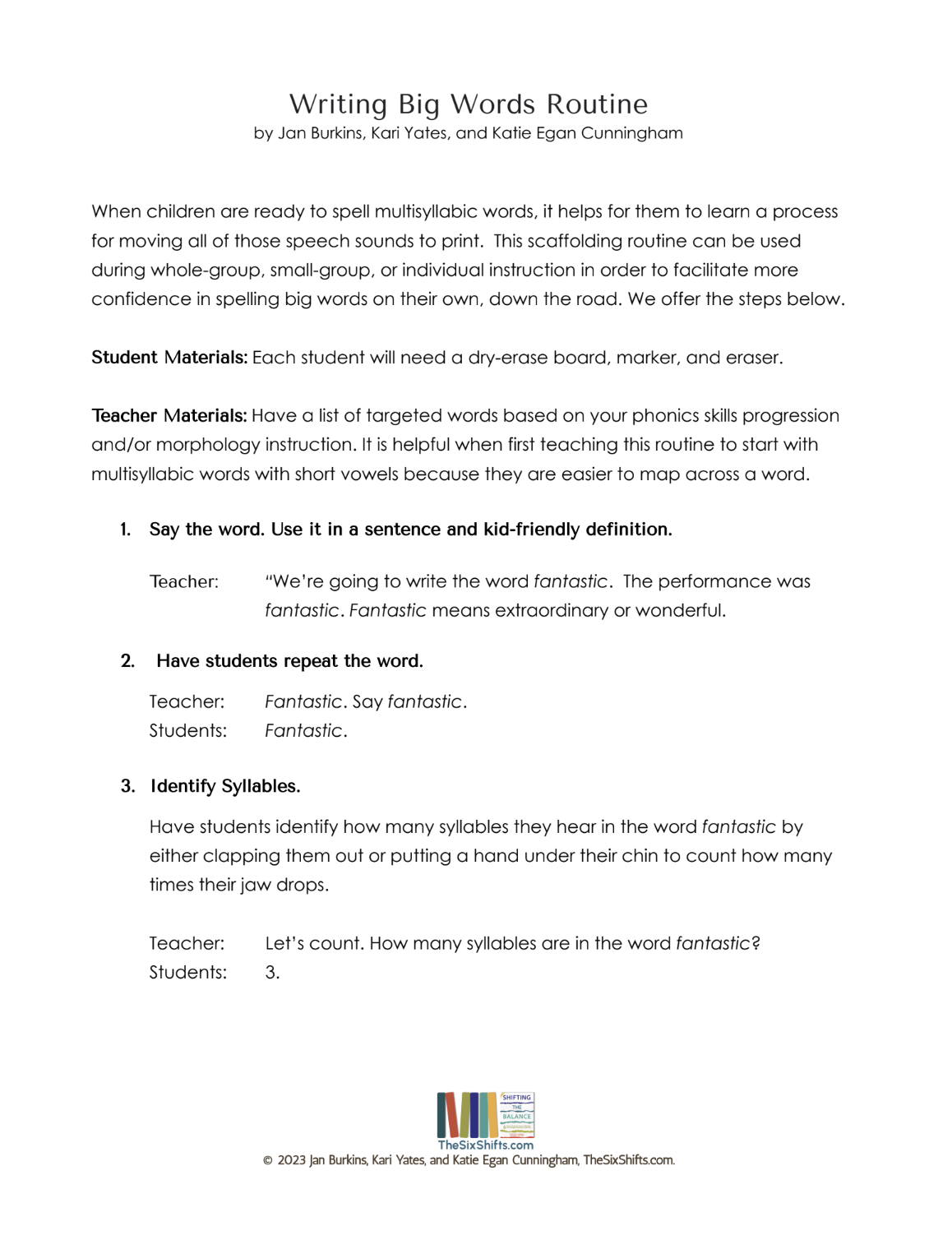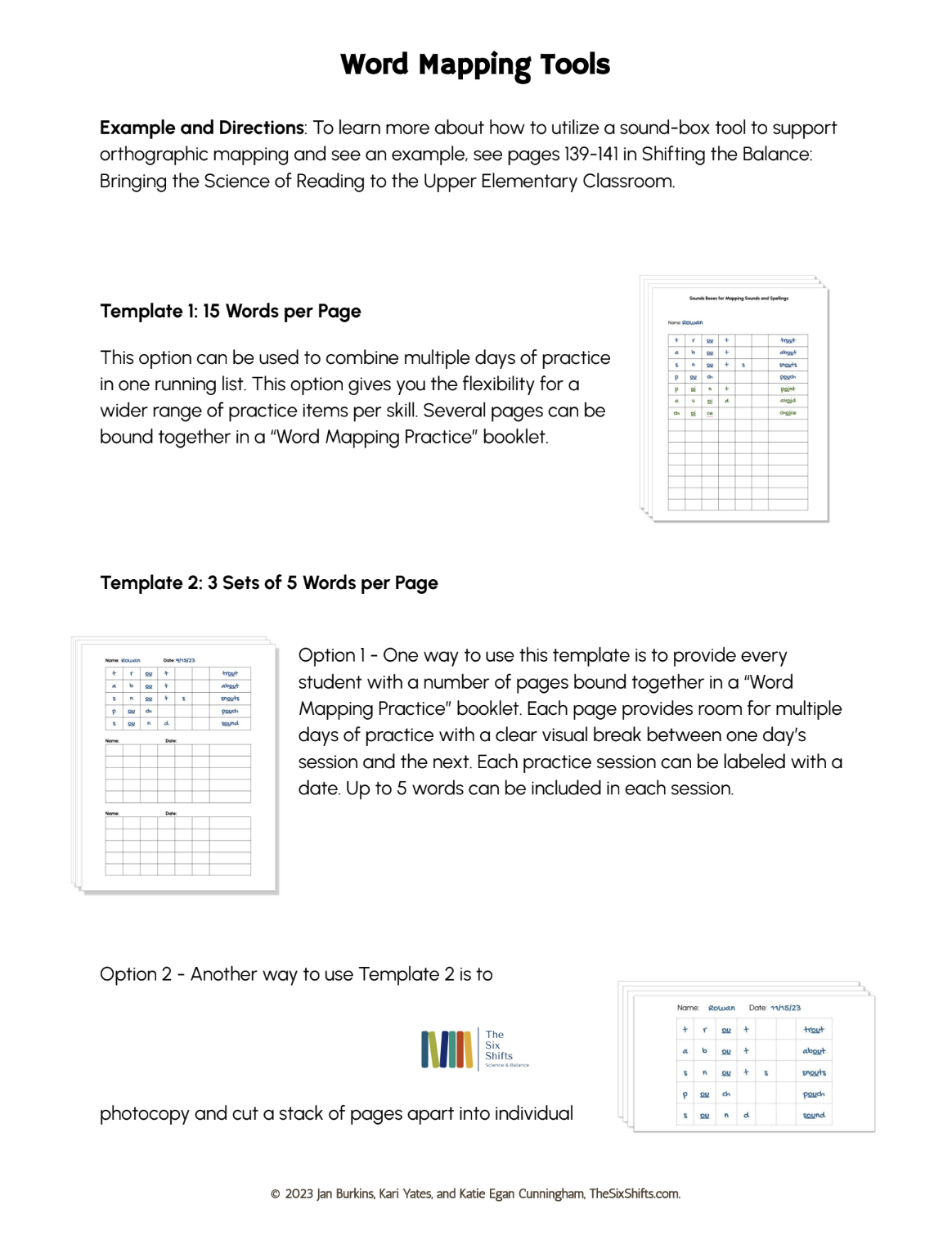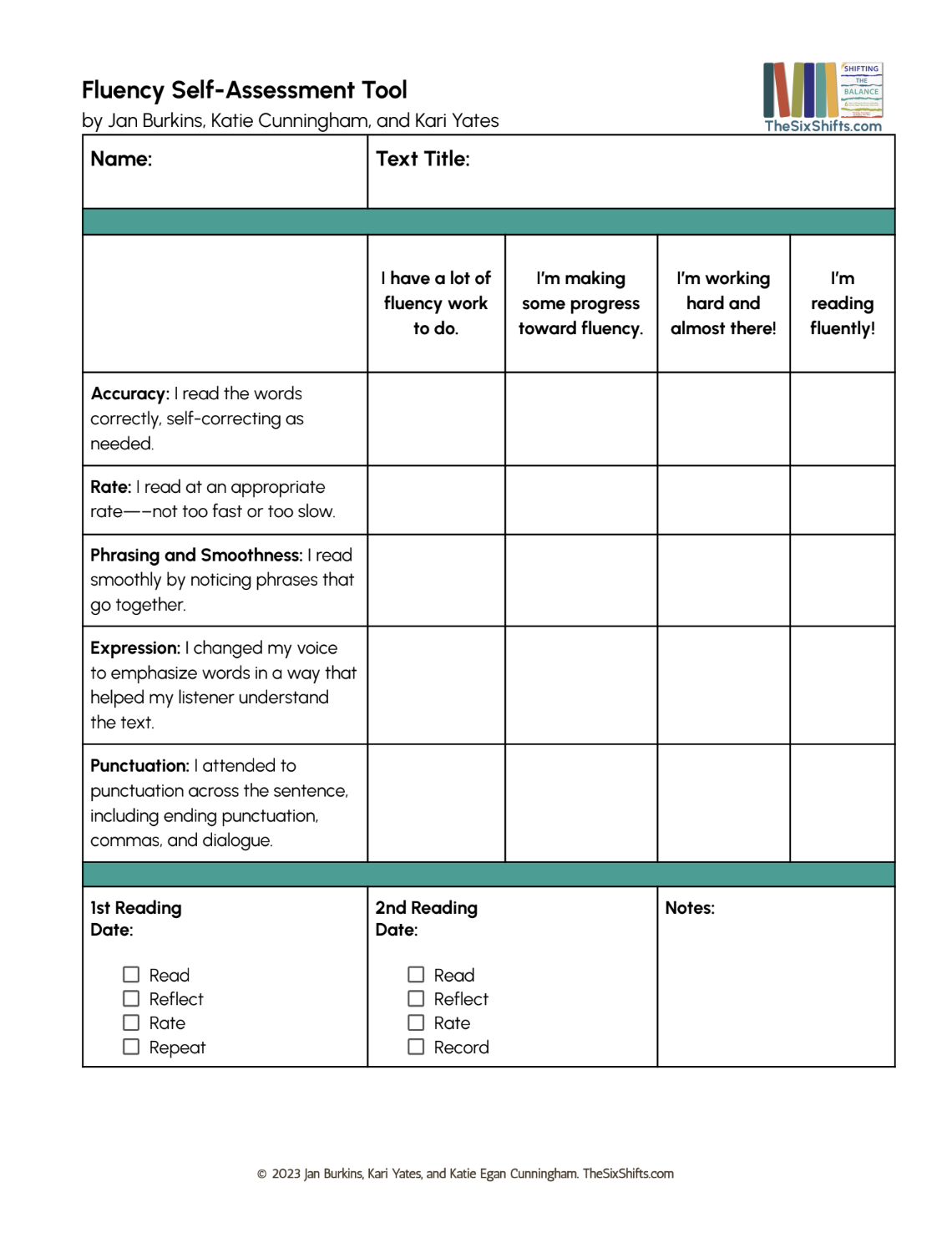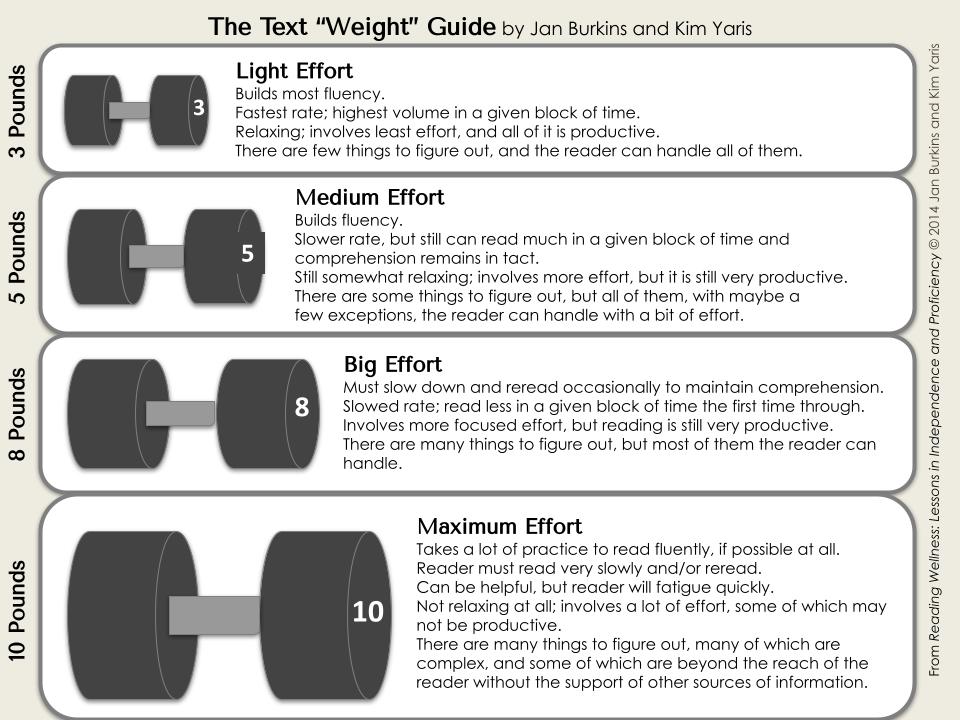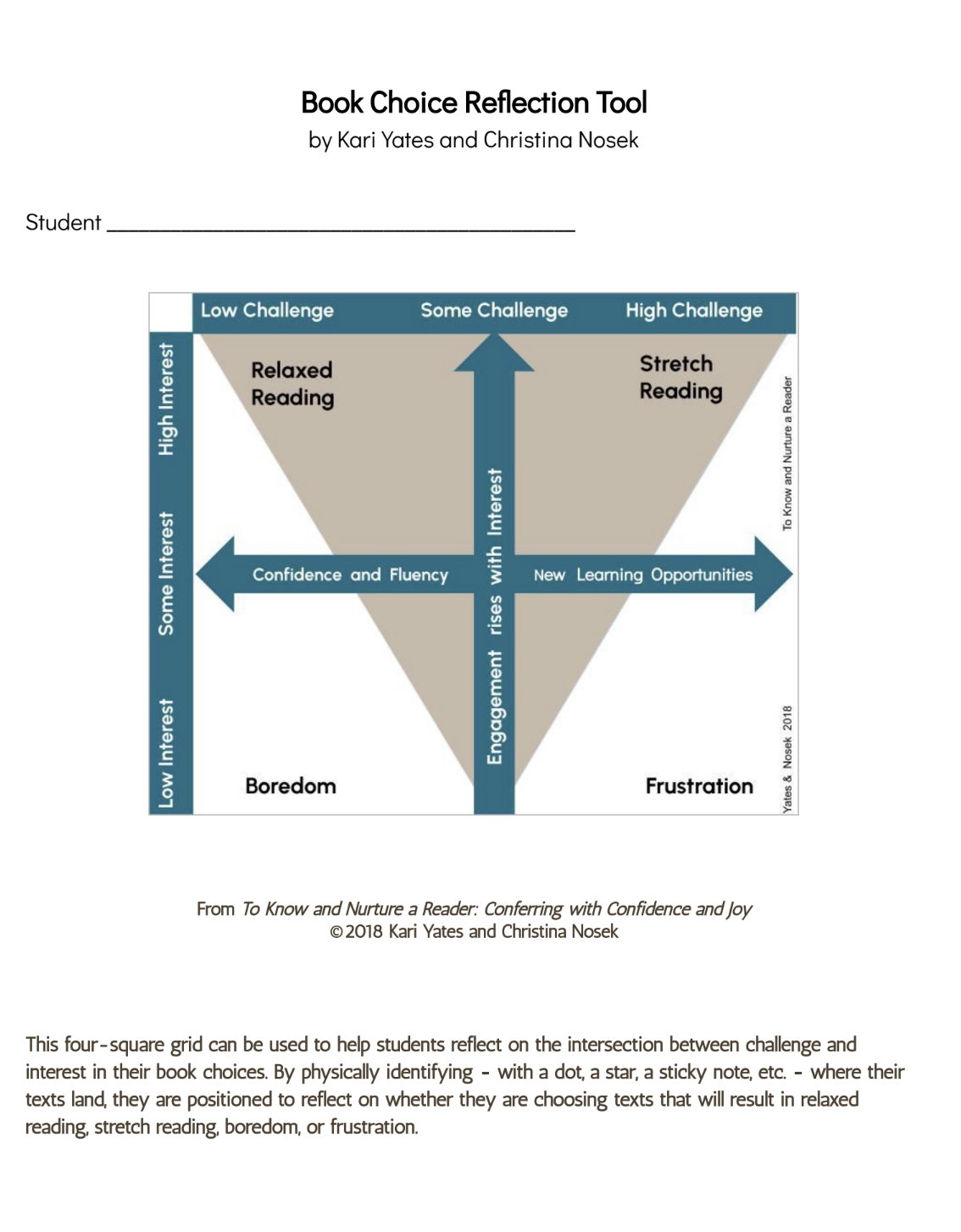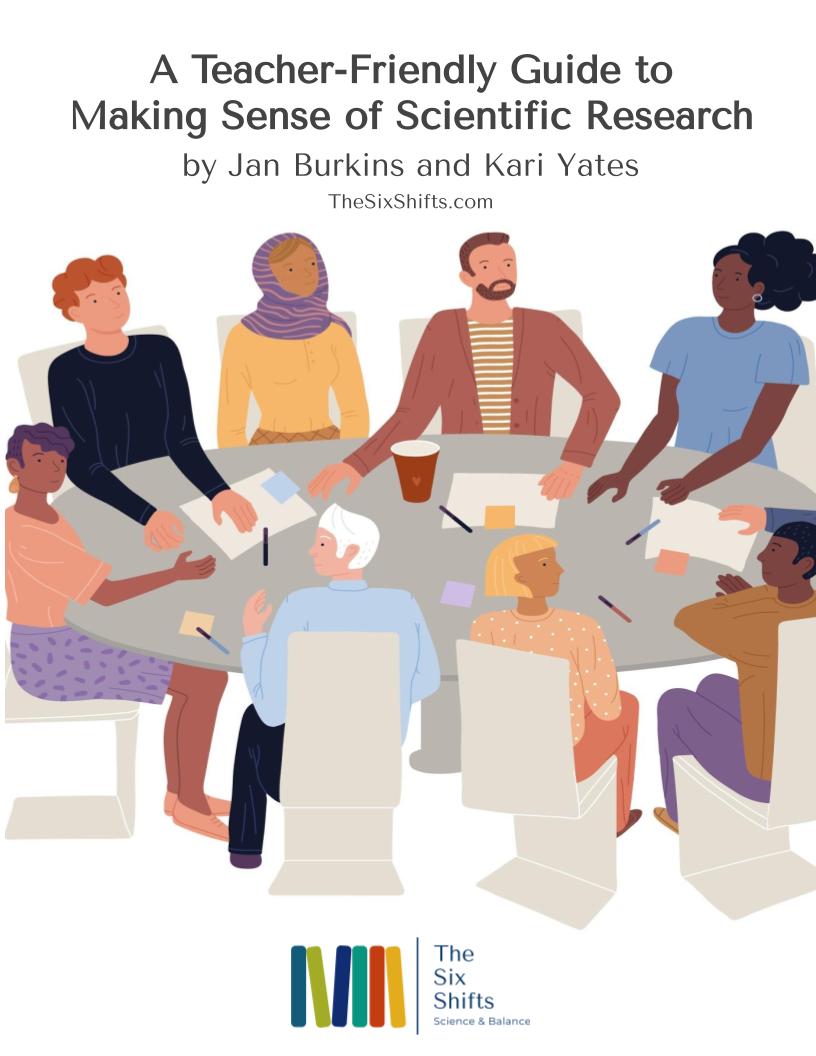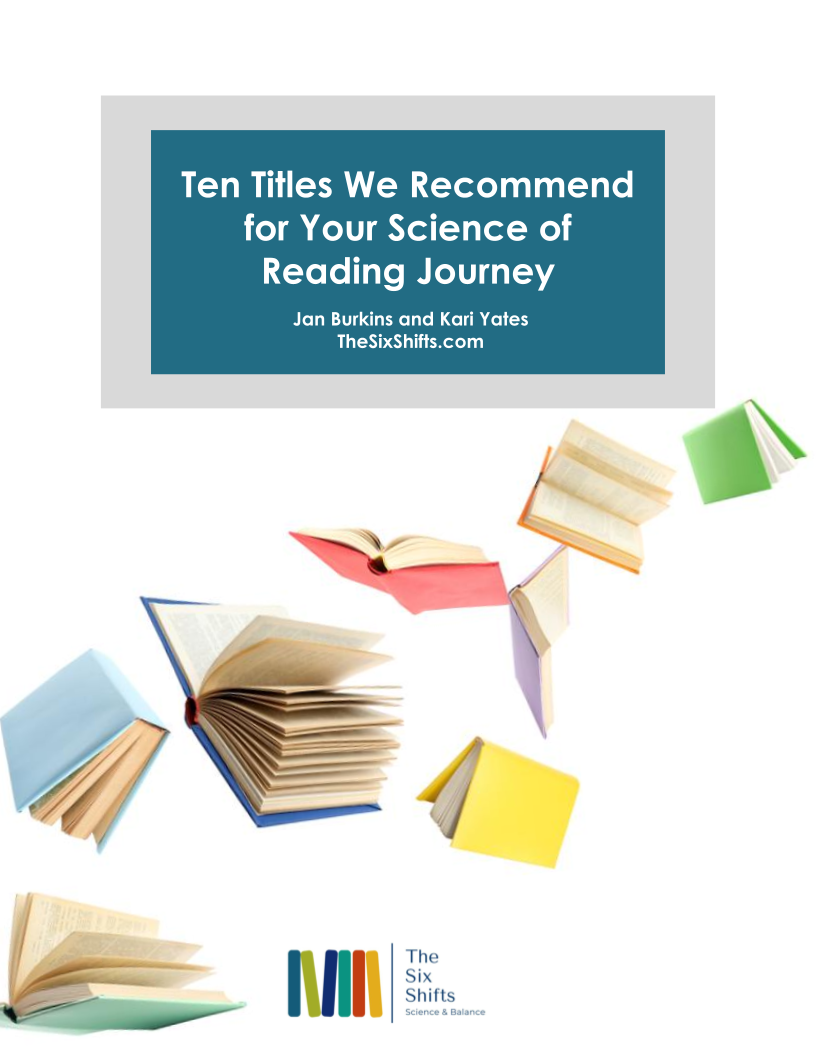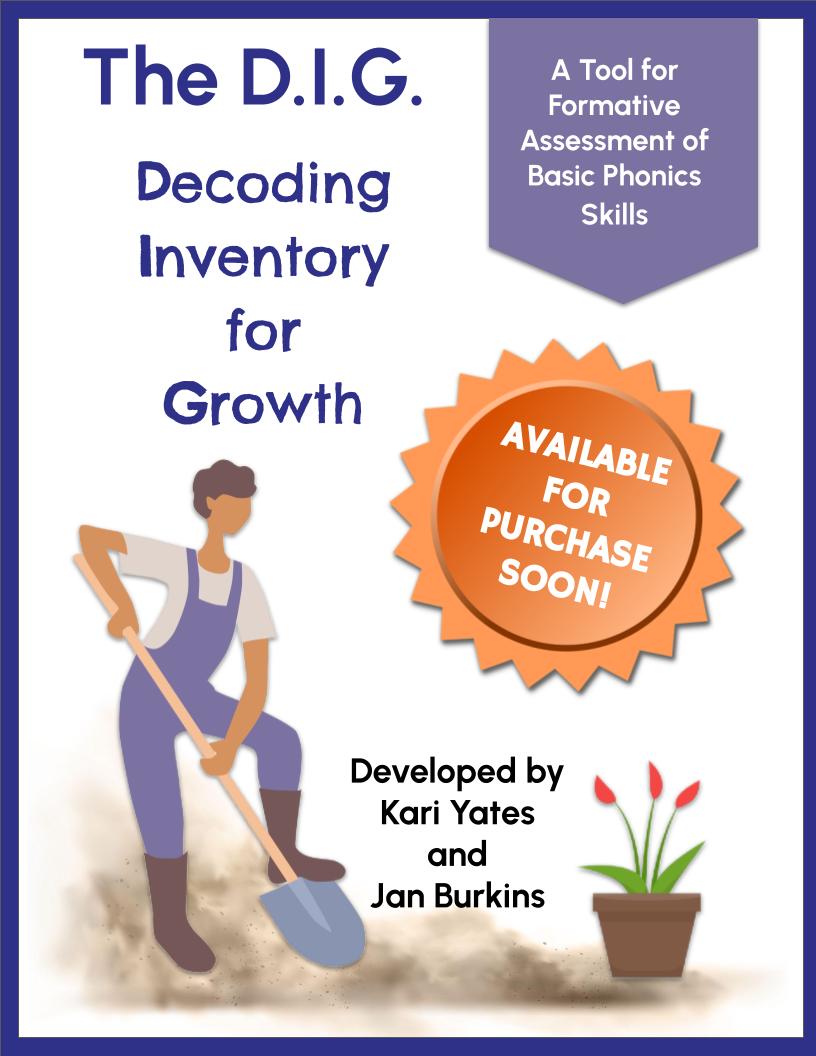The Six Commitments
The work we invite you into is not purely academic or technical in nature. It can also be emotionally taxing work, especially when it calls on us to reevaluate long-held beliefs or practices. As you commit to take an honest second look at practices in your system, school, or classroom – in order to spot misunderstandings, misinformation, and missed opportunities – we hope you will find grace for yourself. To that end, we share with you the commitments we crafted for ourselves as we stepped into this vulnerable work.
The Six Commitments – Printable Color-Me Bookmarks
Would you like to have a fun way to access the Six Commitments or share them with colleagues? These unique printable, “color-me” bookmarks are designed and generously shared by Kim Harkreader. Thanks, Kim! Where might you place these in your world as a reminder to give yourself grace? How will you share these little goodies with those who support and inspire you? Which commitment will you focus on today?
5 Walls and 5 Bridges
Our goal is to create momentum, one conversation and one changed practice at a time. If you’re working to build momentum but running into barriers as people with diverse approaches struggle to hear and understand each other, we invite you to download this tool. In this one-pager we share the five walls we’re trying hard to avoid in our work, and the five bridges we’re working to build.
Interactive Text Experience Planning Template
Are you looking for a simple tool that will help you maximize read aloud and shared reading? We’ve built this planning template to support and streamline planning for read aloud and shared reading. This tool will help you design purposeful and engaging interactive text experiences that will help students unlock the meaning of texts and arrive at a deeper understanding. We’ve broken planning down into a few simple steps – before, during, and after reading – to make planning efficient and effective. (From Shift 1 in Shifting the Balance; 6 Ways to Bring the Science of Reading into the Upper Elementary Classroom.)
The Strategic Six Thinking Moves
Strategic readers use thinking moves – or in the head processes – to help them unlock the meaning of texts. We’ve distilled the extensive body of research on the most high-leverage comprehension strategies to help you provide comprehension instruction that’s actionable and focused on the strategies that matter most. We’ve given these “thinking moves” kid-friendly names, memorable icons, and simple definitions to help simplify and strengthen your strategy instruction. And you can choose between a color format or black-and-white. Pair our Strategic Six Thinking Moves with our Interactive Text Experience Planning Template and to help your students’ read actively and comprehend deeply. (From Shift 2 in Shifting the Balance; 6 Ways to Bring the Science of Reading into the Upper Elementary Classroom.)
Reciprocal Teaching Tips
Reciprocal teaching (Palinscar and Brown, 1984) draws on four key thinking moves. In this tool, we break down the thinking moves the “teacher” actions to help you make reciprocal teaching a regular part of your instruction. In this document, you’ll find a step-by-step process for modeling this reciprocal teaching for your students, setting them up for success to learn with and from each other as readers. (From Shift 1 in Shifting the Balance; 6 Ways to Bring the Science of Reading into the Upper Elementary Classroom.)
Student Grid for Practicing Reciprocal Teaching
After some teacher modeling, reciprocal teaching (Palinscar and Brown, 1984) gives students the opportunity to take turns being the “teacher” in small groups or with a partner and guide the use of four thinking moves: summarizing, clarifying, questioning, and predicting. This tool is a one-page, reusable four-square grid that you can slide into a page protector to have students use again and again as they affix sticky notes to each square. (From Shift 2 in Shifting the Balance; 6 Ways to Bring the Science of Reading into the Upper Elementary Classroom.)
Lesson Planning Template for Explicit Vocabulary Instruction
Are you wondering how to ensure explicit vocabulary instruction is both engaging and impactful? In our Lesson Plan for Explicit Vocabulary Instruction, we draw on decades of research on what makes vocabulary learning easier for the brain. This lesson structure helps you plan explicit lessons on targeted words. Broken down into four simple steps, our template supports you in developing kid-friendly definitions, guiding analysis of word structures, clarifying contextual use of the word, and connecting the new word to established word networks. (From Shift 3 in Shifting the Balance; 6 Ways to Bring the Science of Reading into the Upper Elementary Classroom.)
Lesson Planning Template for Morphology Instruction
Morphology lessons? What do they look like? How are they different from explicit vocabulary lessons? In this Morphology Lesson Planning Template, we give you a step-by-step approach for helping students learn to look within words for morpheme clues. In combination with our Lesson Plan for Explicit Vocabulary Instruction, this lesson will get you on your way to helping students develop word power by leveraging strategies and word networks to lock in the meaning of new words. (From Shift 3 in Shifting the Balance; 6 Ways to Bring the Science of Reading into the Upper Elementary Classroom.)
Multi-year Plan for Systematic Morphology Instruction
Are you looking for a ready-to-use resource to help you partner with colleagues to invest in intentional morphology instruction across the grade levels? In this ready-to-use instructional resource, we offer a suggested scope and sequence as one pathway to systematically teach morphemes across the upper elementary years to boost both word recognition and language comprehension. (From Shift 3 in Shifting the Balance; 6 Ways to Bring the Science of Reading into the Upper Elementary Classroom.)
Books to Encourage a Love of Words
Word! Words! Wonderful words! If you are looking for read aloud titles that will encourage and inspire students to become word collectors, this list is for you. (From Shift 3 in Shifting the Balance; 6 Ways to Bring the Science of Reading into the Upper Elementary Classroom.)
Explicit Phonics Lesson Template
Are you looking for support in delivering explicit phonics instruction? We’ve built this planning template for you. When paired with a research-informed plan for which skills will be taught in which order (scope and sequence), this tool can help you design high-quality whole group or small group phonics instruction. The framework flexibly support either two or three days of instruction on a specific focus skill. The download also includes the planning template plus guidance to make planning for each of the components efficient and effective.
Phonics Skills Progression
If you are wondering what a simple but brain-friendly scope and sequence might like for phonics or word study, we have a Phonics Skills Progression for you dig into. In this planning tool, we provide an abbreviated example of a typical skills progression beginning with the most foundational skills at the base and building upward to the skills necessary to read complex multisyllabic words. The tool also includes example words as you climb up skills progression. (From Shift 4 in Shifting the Balance; 6 Ways to Bring the Science of Reading into the Upper Elementary Classroom.)
Routine for Writing Big Words
Wondering how to help students write big words with greater accuracy and automaticity? In this tool, we provide a step-by-step routine to help students write big words, aligning sounds and spellings across the whole word. This brain-friendly approach to learning to write big words will allow your students to become more independent and successful. (From Shift 4 in Shifting the Balance; 6 Ways to Bring the Science of Reading into the Upper Elementary Classroom.)
Word MappingTools
Sound boxes–also known as Elkonin boxes (Elkonin, 1973) are a great way to support children’s brains as they practice orthographic mapping. In this download, we offer you a variety of templates to support ongoing use of sound boxes to make the abstract work of aligning phonemes and graphemes more concrete and lock words into long-term memory. (From Shift 4 in Shifting the Balance; 6 Ways to Bring the Science of Reading into the Upper Elementary Classroom.)
Reading Fluency Self-Assessment Tool
Fluency is definitely more than speed! If you’re looking for a simple self-assessment tool to help students track their reading fluency progress and set goals, we hope you find this one helpful. In our Fluency Self-Assessment Tool, we prompt students to think about the components of fluent reading so they can reflect on what they’re doing well already and how they can stretch themselves. This ready-to-use tool can help students take ownership of their fluency growth across practice sessions, mapping their progress as they go. (From Shift 5 in Shifting the Balance; 6 Ways to Bring the Science of Reading into the Upper Elementary Classroom.)
Text Difficulty Weight Lifting Metaphor Tool
As students become fluent readers, it’s important for them to read texts that intentionally build their reading muscles. Using a metaphor from Jan Burkins and Kim Yaris’s book, Reading Wellness (described in Shift 6 of Shifting the Balance for Upper Elementary Classrooms), this graphic supports students as they think about how the “weight” (difficulty) of a text they choose affects the necessary work to “lift” (comprehend) it.
Book Choice Reflection Tool
Helping kids develop skills for choosing “good-fit” texts can be messy work, but the payoff is worth it! This graphic tool from Kari Yates and Christina Nosek’s book, To Know and Nurture a Reader, (described in Shift 6 of Shifting the Balance for Upper Elementary Classrooms), supports students in learning to weigh their book choices with greater awareness and purpose. The tool guides children in finding the sweet spot between challenge and interest as they select books for various purposes.
Teacher-Friendly Guide to Making Sense of Scientific Research
Are you confused by conflicting studies and research claims? We’ve written this simple guide just for educators like you to help you make better sense of research, avoid confirmation bias, and make sound instructional decisions.
10 Titles We Recommend for Your Science of Reading Journey
Our journey into the science of reading has been informed and enriched by the work of many great thinkers. Here we share ten of our favorite titles as well as brief descriptions of how they might support your learning. This list is just a starting point! There are many more titles you can explore as you begin to explore the ways reading science can support the learning of your students.
Decoding Inventory for Growth (DIG)
Dear Readers,
We have run into some complications with the final steps of getting the Decoding Inventory for Growth (DIG) into the hands of teachers.
We are truly sorry for the delay. If you are on our mailing list, you can look for an email announcement when the DIG becomes available for purchase on our site. Otherwise, please check back in a month or so.
Thank you for your patience.
![]() Jan and Kari
Jan and Kari

